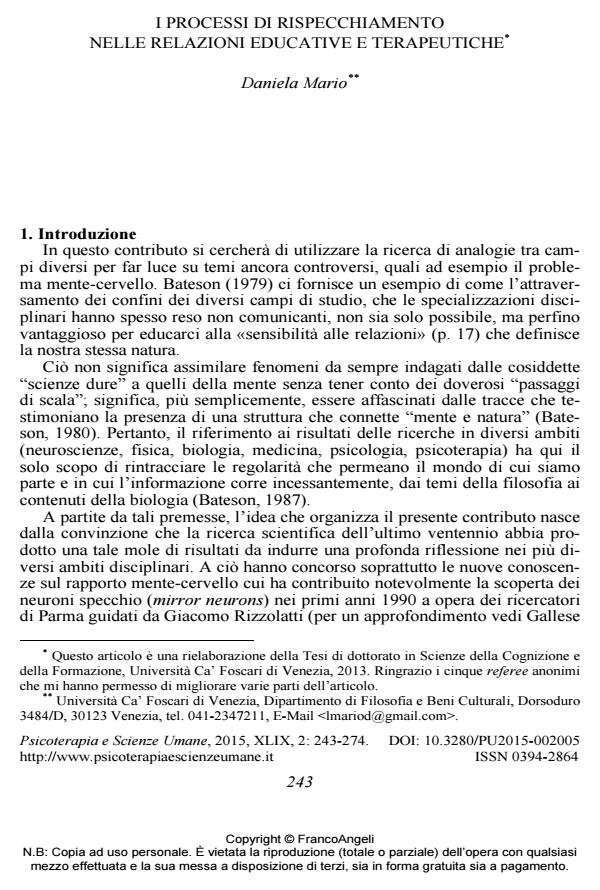Mirroring processes in human development, education and psychotherapy
Journal title PSICOTERAPIA E SCIENZE UMANE
Author/s Daniela Mario
Publishing Year 2015 Issue 2015/2
Language Italian Pages 32 P. 243-274 File size 141 KB
DOI 10.3280/PU2015-002005
DOI is like a bar code for intellectual property: to have more infomation
click here
Below, you can see the article first page
If you want to buy this article in PDF format, you can do it, following the instructions to buy download credits

FrancoAngeli is member of Publishers International Linking Association, Inc (PILA), a not-for-profit association which run the CrossRef service enabling links to and from online scholarly content.
Recent advances in different disciplines (neurosciences, quantum physics, biology, philosophy, etc.) highlight the "relational" aspect both at the infinitely large and the infinitely small levels. In particular, the mirror neurons discovery contributed to clarify the sub-personal (neural) mechanisms that underlie the relational and embodied aspects of human nature. Mirroring processes in human development, education and psychotherapy are examined, i.e., where these processes are implied both intentionally and automatically in a pre-reflexive way. A "good mirroring" implies the "intentional attunement", understood as a consequence of the "mirroring field" created between the two poles of the relationship. These two poles resonate with each other with sequences of goal directed inter/actions and intentional use of metaphorical processes which are intrinsic to the nature of language and cognition.
Keywords: Mirror neurons, embodied simulation, intentional attunement, cognitive metaphor, mirroring fields
- Il ruolo delle affordances e il sé agente nella cognizione del rischio Daniela Mario, in RICERCHE DI PSICOLOGIA 2/2018 pp.187
DOI: 10.3280/RIP2018-002001
Daniela Mario, I processi di rispecchiamento nelle relazioni educative e terapeutiche in "PSICOTERAPIA E SCIENZE UMANE" 2/2015, pp 243-274, DOI: 10.3280/PU2015-002005